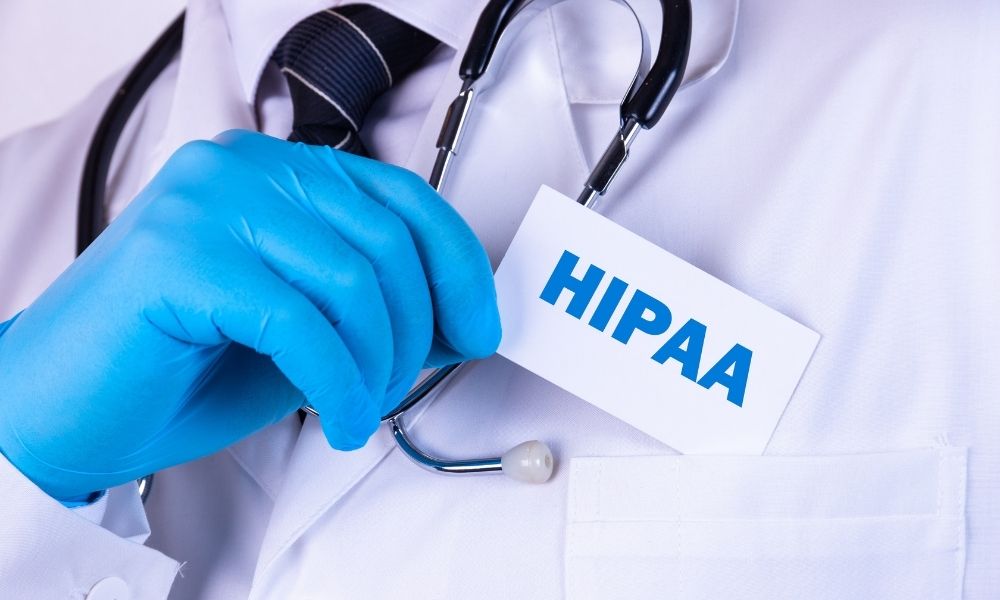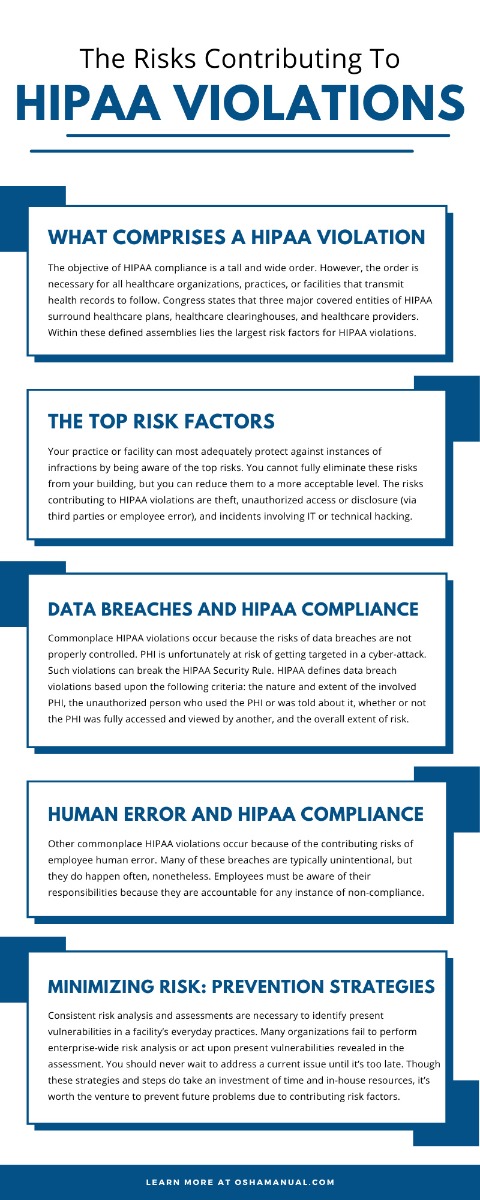
HIPAA (the Health Insurance Portability and Accountability Act) has now been in effect for several decades and has only grown larger in scale and influence. The importance of HIPAA compliance is a vivid reality within a wide array of occupations within the healthcare industry. HIPAA regulations are complex and everchanging, which is why you continually need to be aware of common pitfalls, risks, and contributing factors that lead to HIPAA violations.
HIPAA ensures that the security of patient’s personal health information (PHI) is adequately safeguarded. This legislation strictly controls who can access or divulge this private information. The blanket term for HIPAA compliance is privacy. The key principle of HIPAA advocates for a patient’s right to privacy at all costs. Anything covered under HIPAA needs strict protection. Healthcare providers must use proper procedures, accurate measures, and set practices.
Nevertheless, violations to patient privacy do occur within medical, dental, or other healthcare facilities. HIPAA violations broadly occur when covered entities do not adequately protect a patient’s PHI. Let’s examine closer the risks contributing to HIPAA violations to provide corrective solutions to meet industry standards.
What Comprises a HIPAA Violation
The objective of HIPAA compliance is a tall and wide order. However, the order is necessary for all healthcare organizations, practices, or facilities that transmit health records to follow. Congress states that three major covered entities of HIPAA surround healthcare plans, healthcare clearinghouses, and healthcare providers. Within these defined assemblies lies the largest risk factors for HIPAA violations.
A HIPAA violation occurs when one of the covered entities fails to comply with the outlined provisions of HIPAA regulations, such as the HIPAA Privacy, Security, or Breach Notification Rules. Violations may be deliberate or completely unintentional. Either way, financial penalties can occur at different levels of violations of HIPAA rules if they are severe enough. What happens after non-compliance depends on the severity of the said violation.
The majority of HIPAA violations occur due to pure negligence, resulting from a lack of proper risk assessments. Productivity is critical to stay on top of the most current updates and rules. All employees of a covered entity should understand the potentially high costs of such infractions and keep an eye out for common risk factors leading to compliance issues in their workplace.
The Top Risk Factors
Your practice or facility can most adequately protect against instances of infractions by being aware of the top risks. You cannot fully eliminate these risks from your building, but you can reduce them to a more acceptable level. The risks contributing to HIPAA violations are theft, unauthorized access or disclosure (via third parties or employee error), and incidents involving IT or technical hacking. Keep in mind that PHI can be in various forms, such as oral, paper, or digital. Since PHI is transmitted or maintained via one of the above mediums, this private information can be vulnerable to breach. If the personal information is improperly unsecured, then it is vulnerable to a breach.
Data Breaches and HIPAA Compliance
Commonplace HIPAA violations occur because the risks of data breaches are not properly controlled. PHI is unfortunately at risk of getting targeted in a cyber-attack. Such violations can break the HIPAA Security Rule.
HIPAA defines data breach violations based upon the following criteria: the nature and extent of the involved PHI, the unauthorized person who used the PHI or was told about it, whether or not the PHI was fully accessed and viewed by another, and the overall extent of risk.
The greatest risks contributing to data breach violations include unsecured digital files (no use of security passwords), unencrypted data (additional layers of security in case of access to a password-protected device), and inactive or ineffective antivirus software (in case of hacking). Stay on top of these typical causes to best steer clear of legal liabilities.
Human Error and HIPAA Compliance
Other commonplace HIPAA violations occur because of the contributing risks of employee human error. Many of these breaches are typically unintentional, but they do happen often, nonetheless. Employees must be aware of their responsibilities because they are accountable for any instance of non-compliance.
Major HIPAA violations include employees unnecessarily viewing files that they are not meant to have access to, or staff leaving private patient information unattended on a desk or computer. Both of these situations are risky because they leave the PHI vulnerable. Staff should close any programs when not in use and lock password-protected devices. Employees must handle and store appropriate paperwork in areas secure for their eyes only.
Other human error HIPAA occurrences include accidentally bringing information home or throwing it away. Employees may also mistakenly misplace a file in the office or forget to shred critical documents, which leaves PHI equally unsecured. Awareness and monitoring are critical to reducing such risks. Proper prevention strategies also build up a culture of compliance.
Minimizing Risk: Prevention Strategies
Consistent risk analysis and assessments are necessary to identify present vulnerabilities in a facility’s everyday practices. Many organizations fail to perform enterprise-wide risk analysis or act upon present vulnerabilities revealed in the assessment. You should never wait to address a current issue until it’s too late. Though these strategies and steps do take an investment of time and in-house resources, it’s worth the venture to prevent future problems due to contributing risk factors. Check out this tutorial video on how to perform a HIPAA risk analysis in your facility.
Aside from risk analysis, the best way to minimize the risk of violation is to provide adequate employee training on HIPAA policies. Employers should ensure thorough education for every employee who comes into contact with any medium of PHI. Proper training includes comprehensive knowledge about HIPAA laws, alongside specific procedures or policies that your practice implements to reduce risk. The right education is key to understand regulations and reveal how these laws relate to their daily work duties.
If you are in need of highly convenient and resourceful HIPAA training materials for employees, look no further than Gamma Compliance Solutions. Our thorough HIPAA compliance manuals and online education courses are suitable for small and large healthcare offices alike. These HIPAA materials are self-guided, easy-to-use, and all-inclusive to protect you and your staff from legal compliance issues. Whatever your needs are for HIPAA compliance, we’ve surely got you covered with our various resources. Browse our HIPAA packages today.


